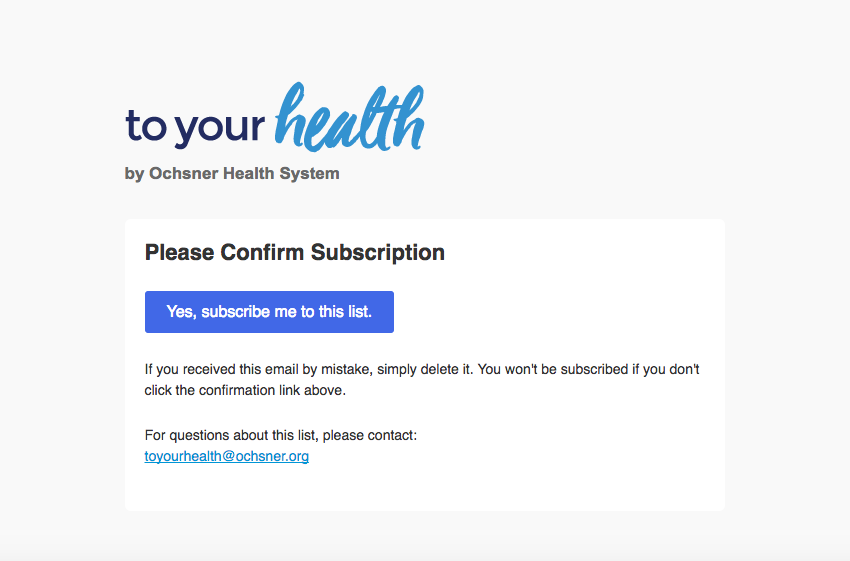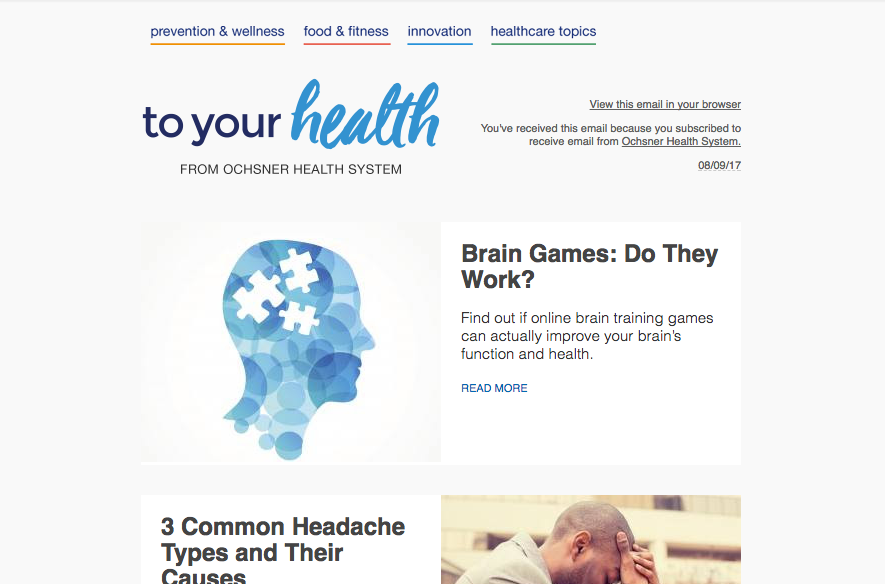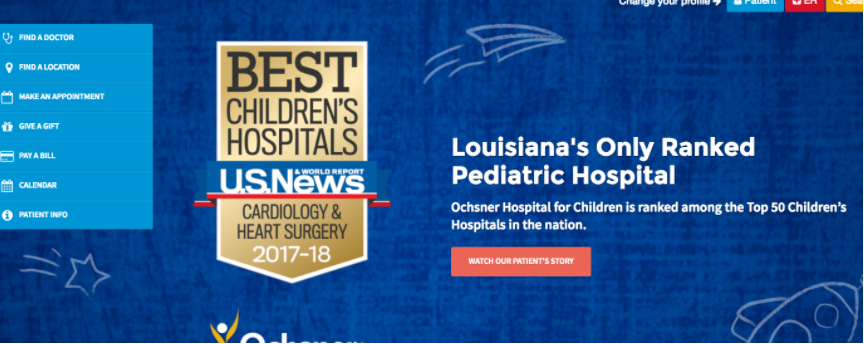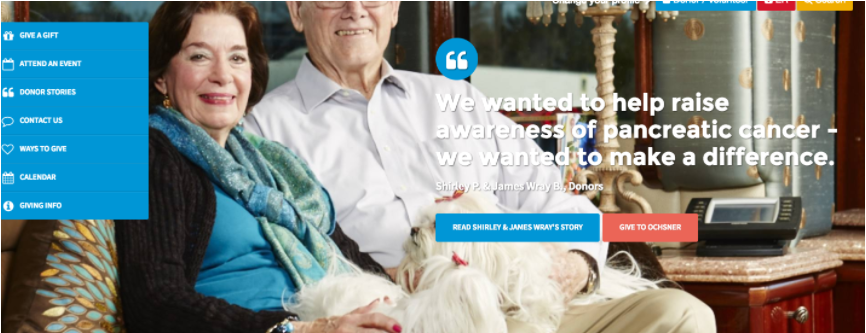How To Be A Digital Health Leader in 2018
How To Be A Digital Health Leader in 2018
Oliver Tree | Marketing Content Manager
August 9, 2017
If you haven't already, it's time to think about what you want from your hospital or health system’s digital platform in 2018.
What To Look For in 2018
When it comes to focusing on where to direct resources, it’s tempting to conduct an analysis of what services your digital platform currently offers, and what it’s missing.
But, while services like instant appointment booking, live wait times, or virtual visits are important components for any health system...
There’s more to a digital patient experience than the sum of its services.
A multi-million dollar Digital Experience Platform crammed with cutting-edge features is no good to anyone if it lacks a cohesive patient engagement and branding strategy.
That’s why, in addition to having a service-enriched experience, leading providers also focus on the following three areas:
- Branding and design consistency
- Content
- Personalization
In this blog, we’ll use the Mayo Clinic and Ochsner Health to show how all three can be deployed effectively.
Branding and Design Consistency… Across ALL Digital Channels
As Phase2’s Creative Director, Joey Groh, likes to point out, “Your Brand is the new digital bedside manner”.
Branding is not just the logo or the font used on a letterhead, it’s the vehicle through which your hospital or health system projects its core values outwardly to its patients and, crucially, inwardly to its staff to live up to those core values.
Therefore, it needs to be applied consistently across every touchpoint to constantly reinforce those values.
One of the ways Phase2 helps clients achieve this is by creating digital style guides and utilizing component based design tools that give web editors and marketing teams the freedom to create new content while sticking to pre-set brand guidelines.
So, ask yourself... does your hospital or health system apply your brand consistently across ALL your digital channels, and is the technology and user-experience in support of this?
With so many third party applications handling different parts of the digital patient experience, it’s easy to overlook certain channels.
The following is an example email received from Ochsner Health, asking to confirm a subscription to their newsletter.

And here's an example of their newsletter.

Ochsner’s outreach, steeped in their ‘to your health’ branding, extends the opportunity to create brand continuity and develop a consistent and welcoming digital bedside manner. This brand touchpoint is a simple way to reinforce your brand and the enhance the digital patient experience.
Content (and SEO) is King
Try Googling ‘diabetes’ or ‘heart attack’. Chances are the Mayo Clinic pops up as one of the top links.
What the Mayo Clinic’s online experience may lack in outright feature horsepower, it more than makes up for in its use of healthcare content.
Without diving into their SEO/SEM strategy, it’s fair to say that what they’re doing is working. According to Quantcast, Mayoclinic.org pulls in over 7.2 million US-based unique viewers per month, versus 1.1 million for Cleveland Clinic.org and 718 thousand for hopkinsmedicine.org.
They’re using content as ‘the top of the funnel’ when it comes to marketing to prospective patients. If you haven’t done so already, it’s time to think of your content as more than just a ‘nice to have’, but as one of the main engines to drive brand awareness, trust, and ultimately increased market share.
It’s important to note, we’re not just talking about the auto-updated, generic content stored in your health library and downloaded from a third party vendor.
To stand out (both in terms of SEO and lasting engagement) you need to create your own original, insightful pieces.
Leading health systems are moving beyond the symptom, description, treatment content paradigm to create ‘whole-person’ health sub-brands and content. A great example of this is Phase2 client Northwell Health's The Well.
Thinking about content in this way is critical to creating a digital patient experience beyond the merely functional (booking an appointment, finding a location etc). Take a look at ‘A Parents Guide to Concussions’ from Ochsner Health for a good example of useful, concise, and eminently shareable content. Following a recent site refresh, The Mayo Clinic now has a whole area dedicated to original content called Hometown Health.
If you're thinking about taking content a step further and personalizing the experience, check out our run-down on how to create adaptive, engaging content.
Getting Personal
Sticking with Ochsner Health, their commitment to personalizing the website experience is a real differentiator.

Land on the homepage and you’ll see the above selection tool where you can self-identify as a patient, doctor, donor etc. The rest of the site experience is then tailored to that profile thereafter.
Learn more about getting started with personalization.
Select ‘Patient’ and you’re treated to a patient-specific left-hand navigation menu. You’re also shown a full page hero image showing off Ochsner’s ‘Best Children’s Hospital’ award and a link to a relevant testimonial video.

Select the ‘Donor’ option to get a different left-hand navigation menu and, crucially, a specific CTA: “Give To Ochsner”.

While this is by no means an Amazon or a Facebook level of personalization, it’s a great start. Tailoring the site experience with targeted CTAs is great for optimizing site conversions.
Long-term, using tools like a CRM to build user profiles and serve them relevant experiences is essential if you're to understand the personas of site visitors and build a rapport with them in the years to come.
The Big Picture
Branding consistency, unique and engaging content, and personalization aren’t ‘quick hit’ wins like, say, implementing online appointment booking or displaying live wait times. They are however the cornerstones of a more nuanced and far more powerful digital patient experience.
And while developing this holistic healthcare digital strategy can be overwhelming, you don't have to do it alone.
Engaging a partner like Phase2, with our background helping providers transform the digital patient experience, can be invaluable in helping you plan and design a truly patient-centric experience platform.

